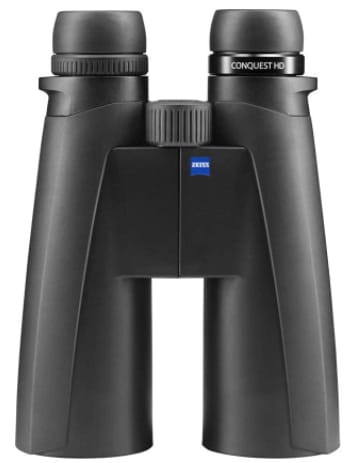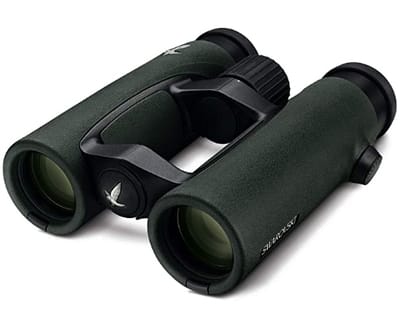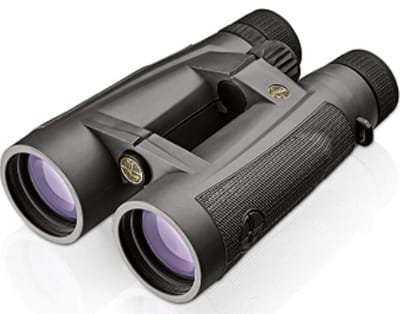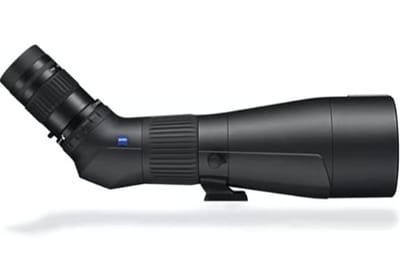All about Birds
Spotting Scope vs Binoculars: The 6 Best Optics for Birders 2022
Finding birds in the bush is almost impossible with the naked eye. That’s why most birders use some form of magnification device, either a spotting scope or a pair of binoculars.
A scope or binoculars can make far off birds appear mere feet away. They’re discreet and allow birders to stay at a safe distance and not scare the bird.
There are major differences between spotting scopes and binoculars, and some key features to look out for on both. Take a look at this buyer’s guide, as well as the best spotting scopes and binoculars for birding in 2020.
What’s the difference?
Spotting scopes
A spotting scope is like a portable telescope. Alternatively, you can think of a spotting scope as one of the lenses off a pair of binoculars.
Because of their portability and powerful magnification, spotting scopes are super popular among bird watchers.
Sometimes, you’ll see spotting scopes called fieldscopes or digiscopes, and they come in a variety of sizes, designs, and budgets.
Spotting scopes are a relatively technical piece of equipment for birders, and, as a rule, you get what you pay for. Cheap scopes tend to lack the precision and high-grade materials to ensure stability or clear optics.
Binoculars
Binoculars come in a dizzying variety of designs, strengths, budgets, and uses. When shopping for binoculars, you’ll see everything from plastic toys to powerful behemoths made for stargazing.
When it comes to birdwatching, a pair of binoculars is your best friend. With a comfortable grip and eyecup, you should be able to look through them all indefinitely without getting uncomfortable.
Binoculars for birdwatching are worth the investment. A good pair should last you a long time, and their superior design, fabrication, and materials should enhance your bird watching experience.
Best Spotting Scope Available Today (2022 Buyers Guide & Reviews)
1. Conquest Gavia (Zeiss)
- 30-60x magnification
- 85mm lens
- Multi-layered anti-reflection coating
- LotuTec hydrophobic coating
- Sighting line
- Waterproof
- 1700g
The new Zeiss Conquest Gavia 85 spotting scope with an angled view was designed especially for birdwatchers and nature enthusiasts.
With impressive precision, low overall weight, and a robust design, the Conquest Gavia is perfect for any outdoor adventure.
The high-resolution, 60x magnification with a wide-angle field of view and rapid focus makes it easy to find and focus on even the faraway birds.
The large 85mm lens is comfortable and allows birders to enjoy nature at low-light levels. The Conquest Gavia has a superbly comfortable design and comes with a universal tripod plate for extra stability.
There’s anti-reflection coating, as well as LotuTec hydrophobic coating, keeping the Conquest Gavia dry in adverse weather conditions.
Pros
- Consistent image quality
- Dual focus
- Weatherproof
- Comes with eyepiece
- 5-year no-fault warranty
- Limited lifetime warranty
Cons
- Price
- Heavy build
- Narrower FOV than other scopes
The Zeiss Conquest Gavia is a beast of a scope with a rugged build, high magnification ranges, and crystal clear image.
2. PF-80ED (Pentax)

- 1400g
- ED glass
- 80mm objective lens
- Fogproof
- Waterproof
- Inbuilt lens shade
The PF-80ED from Pentax is a lightweight angled scope whose robust magnesium-alloy body weighs only 1400 grams.
The extra-low dispersion glass gives increased resolution and provides a crystal clear image even in low-light conditions.
The Pentax PH-80ED has a large, 80mm objective lens for bright viewing under all light conditions. The lighting and clarity are excellent, equivalent to some scopes twice the price.
It has a nitrogen-filled body, making it fogproof, and it’s JIS Class 6 waterproof, meaning it’ll stand up to whatever the weather can throw at it.
A nice built-in lens shade cuts excessive light and reduces interference from rain and weather.
The focus knob at the top moves easily and very accurately. It’s easy to get the birds to pop up with clear colors.
Pros
- Lightweight
- Price
- Fully weatherproof
- Awesome optics
- The bright image even in low light
Cons
- Doesn’t come with an eyepiece
- Not quite as clear as the top-budget scopes
The PF-80ED from Pentax is a sweet lightweight scope that hits the sweet spot for price and performance.
3. Razor (Vortex Optics)

- 60×85
- Straight scope
- Triplet apochromatic lens
- Anti-reflective coating
- Multiple-position eyecup
- Built-in sunshade
- Waterproof and fogproof
The Razor HD 60×85 straight spotting scope from Vortex Optics combines high-end tech with precision craftsmanship.
The triple apochromatic lens and high-density ED glass optimize resolution and fidelity, giving one of the clearest pictures on the market.
The XR Plus anti-reflective coating maximizes brightness even in low light conditions, and it comes with a smooth helical focus, ensuring you get a clear image quickly and accurately.
There’s a nice multi-position eyecup that you can twist up to give eye relief, as well as a locking collar allowing you to rotate the scope for the optimum viewing angle.
Another nice feature on the Razor is the built-in sunshade for reducing glare.
As you’d expect, Vortex Optics has O-ring sealed, and argon purged the Razor, ensuring a totally weatherproof scope. Plus, the Armortek coatings protect the lenses from oil, scratches, and dirt.
If you’re willing to splash out a little, the Razor from Vortex Optics gives everything a birder might want and more.
Pros
- Comfortable
- Small
- Very packable
- Weather and shockproof
- Amazing optics
- Close focus
Cons
- Price
- Fogs when cold
The Razor from Vortex Optics is a superb premium spotting scope for those looking for peak performance and a high-quality build.
My Pick for The Best Spotting Scope
While the Razor from Vortex Optics is one of the best premium spotting scopes I’ve ever seen and the PF80-ED from Pentax is a beast of budget scope, the Conquest Gavia from Zeiss is the Best Spotting Scope of 2020, combining performance and price.

Best Binoculars Available Today (2020 Buyers Guide & Reviews)
1. Conquest Binoculars (Zeiss)

- 10x magnification
- 42mm lens diameter
- HD lens
- T Premium lens coating
- LotuTec external lens coating
- 1400g
- Warranty
The Zeiss Conquest binoculars offer superb birdwatching capabilities for almost half the price of some of the premium options. They’d make a perfect pair for birdwatching, nature observation, and traveling.
HD lens system for superb color rendition and the T Premium lens coating gives a good brightness even in dim light.
The Conquest binoculars come with LotuTec external lens coating to shed moisture and resist scratching. Plus, if anything does happen to your Zeiss binoculars, there’s a great 5-year no-fault policy and limited lifetime warranty.
The aluminum chassis keeps the Conquest strong and light, and they aren’t a burden on a strap around your neck. It’s easy to store them in your pack or on your belt.
Zeiss has made another stunning pair of binoculars that definitely live up to the company’s reputation.
Pros
- Warranty
- Extra-low dispersion glass
- Weatherproof and durable
- Price
Cons
- Over-sensitive focus knob
The Conquest gives you everything you need: lightweight yet rugged build and excellent optics at a reasonable price.
2. EL42 (Swarovski)

- 8.5×42 magnification
- Eyepiece cover
- Field bag
- Carry strap
- Fogproof
- Waterproof
- Warranty
The Swarovski EL42 are multipurpose binoculars that combine size, weight, and optical performance.
Like anything from Swarovski, it’s the details that really make the EL42 a superb pair of binoculars, from the comfortable wraparound grip for extra-steady handling to the patented technologies to maximize color fidelity for bright, high-contrast images.
The EL42 comes with an impressively large wide-angle field of view of 133mm. The adjustable eyecups have hour adjustments to adapt the binoculars to each person’s requirements.
The smooth diopter adjustments have a practical, integrated lock function to stop you from unintentionally losing your bird.
There’s also a nice field bag from Swarovski, as well as covers for the eyepiece and objective lenses to keep the EL42 safe and protected.
There’s tough Swaroclean coating to make cleaning considerably easier, and the weatherproof coating keeps the EL42 waterproof up to 13 ft.
Swarovski has built a reputation on high-quality, premium optics. The EL42 fits into those categories nicely. If you’re willing to pay for the experience, Swaroskit delivers one of the best in the birdwatching business.
Pros
- Easy to hold and steady
- Small and compact
- Incredible clarity, comfort, and construction
- Patented technologies
- Warranty
Cons
- Price
The EL42 from Swarovski are about as good as you can get when it comes to binoculars for birdwatching, if you’re willing to pay, that is.
3. Santiam 15×56 (Leupold)

- Waterproof, fogproof, and shockproof
- Guard-ion lens coating
- Ergonomic
- Adjustable eyecups
- Twilight Max HD light management system
- Built-in tripod port
The Santiams are a nice pair of stout, well-made binoculars that compete with the premiums for almost half the price.
100% waterproof, fog-proof, and shockproof, the Leupold Santiams will follow you everywhere. A little extra weight can actually make finding stability a little easier.
The Guard-ion lens coating sheds water, dirt, and fingerprints for a clear, crisp image, and there’s an extremely smooth focusing system for fine adjustments.
The open-bridge, dual-hinge design makes the Santiams ergonomic and comfortable. Plus, there are field-replaceable adjustable eyecups that provide generous eye relief for comfortable extended viewing.
A really nice feature of the Santiams is the Twilight Max HD Light Management System, which adds up to 30 minutes of glassing light.
There’s also a built-in tripod adapter port that fits most tripods. The Santiams are true competitors in their class and easily rival the big dogs.
Pros
- Clarity
- Magnification
- ED glass
- Low-light
- Weight and balance
- Price
Cons
- Diopter adjustment
- Heavy
The Santiam is a budget-friendly pair of binoculars whose quality and low-light capabilities make them a true competitor in their class.
My Pick for The Best Binoculars
Swarovski produces premium products at the top of the range, and the EL42s are no different.
The Santiams are more reasonable and get the job done. But, if you’re looking to combine performance with price in one, the Zeiss Conquests are the Best Binoculars.

Buying Tips and Guide
When it comes to buying a spotting scope or binoculars for birdwatching, there are thousands of options. Take a look at these buying tips and guides to help you through the process of finding the right birdwatching tool for you.
Support
When it comes to watching birds dozens or hundreds of feet away, you’re going to want to support your equipment. This means getting a tripod, window mount, or rest of some kind.
Most of the scopes on this list have tripod adapters, as do some binoculars. Make sure you take into account how you’ll support your scope or binoculars to maximize the stability and clarity of the image.
Straight or Angled?
Spotting scopes come in two different designs: straight and angled, and each comes with advantages and disadvantages.
Angled spotting scopes tend to be easier and more comfortable to point upwards, which makes them ideal for bird watching as you’ll often be watching birds in the sky.
Angled scopes tend to also be more comfortable for prolonged observation.
Straight scopes, on the other hand, are a little more intuitive and easy-to-use, especially for beginners. Straight scopes can be a little easier to find and track your target.
Because of their design, straight scopes are also usually a little easier to pack and take up less room than angled scopes.
Magnifications and Lenses
Binoculars and scopes are given numbers that show their size and magnification. For example, 15×56 is the designation of the Leupold Santiam.
The 15 in this example is the power or magnification, while the 56 is the diameter of the objective lens, measured in millimeters.
Like most things, the higher, the better. Binoculars and scopes for birdwatching tend to range between 7 and 12 power and 30 to 50mm diameter.
Quality
Premium products tend to be built from higher-grade materials and come with their own patented coatings to ensure brightness, contrast, clarity, and color.
Once you get over the thousand-dollar mark, most scopes and binoculars will get the job done and more, though if you did a side-by-side test, the premium models would almost always have higher quality images.
Durability
Most birdwatching binoculars and scopes come with special coatings to waterproof and shockproof the lenses and bodies.
Again, the premium products always fare a little better than the budget-friendly ones, and I’d say buy the best scope or binoculars you can afford; they should last you a long time.
If anything does happen to your scope or binoculars, check the warranty. Most products out there come with at least a limited lifetime warranty, but many have more generous offers.

